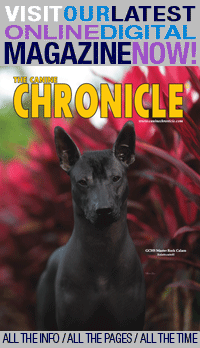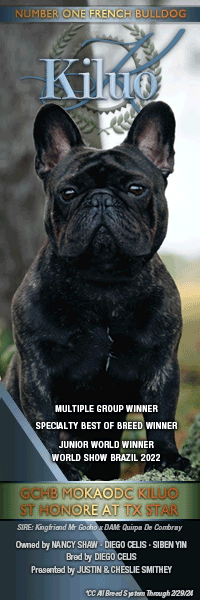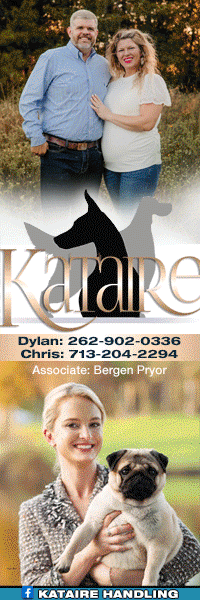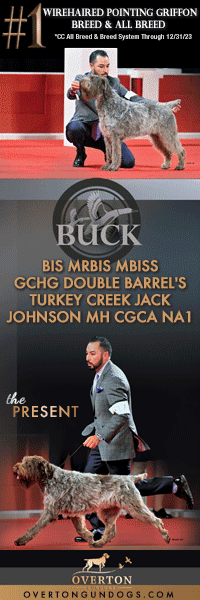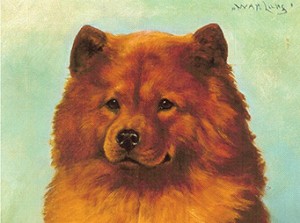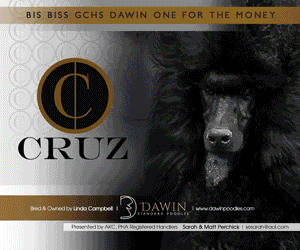Chow Chow History
Click here to read the complete article
358 – September 2019
By Ria Hörter
Although dogs have been our companions for millennia, we have to guess at what prehistoric dogs looked like exactly. One thing we do know for sure, though, is the work they did. They followed the prey, drove the flocks and herds, guarded livestock and defended their owners’ property.
The Dog of the Barbarians
Some historians speculate that the Chow Chow, known in China for 2,000 years, was developed in Arctic Asia about 3,000 years ago. The dog did not look exactly like the present-day Chow Chow, but was a square-built animal that resembled a lion.
The Complete Dog Book published by the American Kennel Club in 1935, speculated that the Chow originated in northern Siberia. As the property of nomads, these dogs would have arrived in China via Mongolia. It seemed that they were used as war dogs. People named the breed man kou, meaning “dog of the Barbarians.”
It has been a long road, from war dog via gun dog, to guard dog and sled dog, later cloister dog and farm dog. For thousands of years, they served the people of China, and were regarded as valuable companions.
Uncivilized and Underdeveloped
We make a big leap in time to the Han Dynasty, the second imperial dynasty in China (206 bc-ad 220) when the Chow Chow was depicted in pottery with a number of familiar characteristics: square-built body, erect ears, a heavy coat around the neck and the tail curled over the back.
When the Lama monasteries were developed in Mongolia and Tibet, the Chow Chow played a role as gun dog and guard dog. At the Chinese imperial court, the Chow was a companion dog as were the Pekingese and Tibetan Spaniel.
One of the theories is that employees of the Dutch East India Company (1602-1799), which had established a trading house (factory) in Guangzhou (Canton) in 1729, took the Chow Chow to Europe. The Chinese term for the trading houses where China’s Western trade was restricted in The Thirteen Factories area of Canton,was Houses of the Barbarians. In other words, Westerners were considered to be uncivilized and underdeveloped.
The origin of the name of the breed is more or less unknown. Apart from “edible dog from China,” the breed was called Wonk or Lang Kou (wolf dog), Hsiung Kou (bear dog) and Hek she (black tongue).
Meat Festival
As farm dogs, they guarded, hunted, hauled, and tidied up small vermin. But most importantly, they were valued for their coat and meat. For Westerners, dog breeding for consumption or fur is unacceptable. In 1915, the Chinese government forbade the breeding and/or killing of dogs for these purposes; Peking ratified this law in 1928. But during my visits to China in the 1980s, I saw dogs for sale for consumption; and 10,000 to 15,000 dogs are eaten annually during the 10-day Yulin Dog Meat Festival held every year since 2009 at Yulin, Guangxi.
In 2016, Dutch breeders, exhibitors and fanciers confronted two members of the Dutch Kennel Club, both international show judges, who had accepted the invitation of the Chinese Kennel Club to judge at the 2019 World Dog Show in Shanghai. After loud protests by Dutch dog fanciers, the two judges canceled their assignments.
Communism
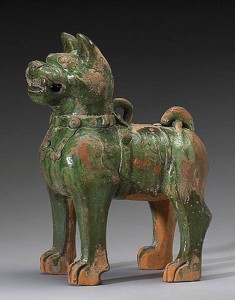 The first dog show in China was organized in Shanghai in 1887. Fifty years later, the 1936 Chinese Kennel Union (CKU) yearbook stated that as many as 89 Chows were entered that year in 1936. The dogs varied in type; some looked “like a bear,” others had a “fox head” or deep sunken eyes and “too many skin folds.” Early Chows were illustrated by paintings by R.S. Mosely (1897) and Gustav Muss-Arnolt (ca. 1920).
The first dog show in China was organized in Shanghai in 1887. Fifty years later, the 1936 Chinese Kennel Union (CKU) yearbook stated that as many as 89 Chows were entered that year in 1936. The dogs varied in type; some looked “like a bear,” others had a “fox head” or deep sunken eyes and “too many skin folds.” Early Chows were illustrated by paintings by R.S. Mosely (1897) and Gustav Muss-Arnolt (ca. 1920).
The CKU seemed to disappear shortly after the Second World War. A general ban on keeping dogs was enacted in 1961. For many years, the Chinese government had been facing the problem of more than half a billion people that must be fed; pet dogs were seen as purely luxury animals that did not fit into the ideas of Communism.
Gradually, the People’s Republic of China changed their opinion about dogs, and keeping them was no longer forbidden. Interest in national dog breeds – for example, the Shar Pei, Pekingese, Shih Tzu and Chinese Crested – grew.
I made my first trip to Wales in the 1970s. As a breeder, owner and exhibitor of Welsh Springer Spaniels, I expected to see many Welsh Springers on the streets, but I did not see a single one except at dog shows. The same thing happened during my trips to China; not a single Chow Chow on the streets!
In today’s China, the breed has been built up using imports from the United States and England. In 2006, the CKU became a contract partner of the FCI; it became a full FCI member in 2011.
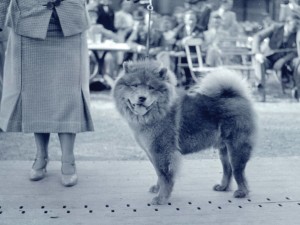 Blue Blood
Blue Blood
A few Chow Chows arrived in Eng-land as early as 1820 when an English newspaper reported the arrival from China of an oriental dog with a thick red coat and blue-black tongue. Exotic dogs taken from foreign countries were exhibited in the Zoological Society of London zoo, or placed in the highest circles in England. The zoo identified them as “the Wild Dogs of China.” Their coats were black, red or blue – long-haired and short-haired. The first attempts at serious breeding began by 1880.
A well-known Chow owner was Lord Hugh, Earl of Lonsdale, who traveled around the world and acquired many animals of all kinds. During one of his visits to the Far East he was, in his own words, presented a purebred specimen of the breed. Lord Hugh presented his “edible dog” to his relatives, the Marquis and Marchioness of Huntley, whose daughter, Lady Granville Gordon, began a breeding program and was an inaugural member of The Chow Chow Club (U.K.) founded in 1895.
Lady Granville Gordon’s daughter, Miss Armyne Gordon (married name Faudel-Philips), shared her mother’s interest in the breed; together they produced the first English-bred champion, the blue male Ch. Blue Blood, from red and black parents.
Chinese Dog Chang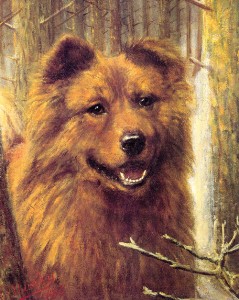
Queen Victoria was given a “Chinese dog” in 1865. The Queen had owned three Chinese dogs as early as the 1840s – Betty, Hung Shoo and Akoe. Were they Chow Chows? If they were, they represented the first-known named dogs of the breed in Great Britain.
In The Illustrated Book of the Dog (1880-81), Vero Shaw wrote about the breed: “… and is in all probability very closely related to the Esquimaux breed. The muzzle is pointed, ears erect, coat long, strait and rather coarse in texture, tail closely curled over the hip. The lips and tongue are black. The dogs are seen in a variety of colours but most commonly of a deep red and most rarely of a jet-black. In this country they are generally known as ‘the edible dog of China,’ as they are used for eating by the inhabitants of China.”
A Chow Chow bitch was exhibited at the Crystal Palace Show in London in 1880. In 1881, the Prince of Wales (later King Edward VII) exhibited his imported “Chinese Chow” Chang at the Royal Dog Show in Dorchester, handling the dog himself.
The 1891 Crufts show, at the Royal Agricultural Hall in Islington, had six dogs and two puppies entered under Foreign Dogs, Chinese. The catalog doesn’t indicate whether they were all Chows, but at least two seem to have been: Chowess, owned by John Lawrence Bosely; born 1889, pedigree unknown; and Chough, owned by A.C. Bartlett; born 1887, “by Dr. Evan’s imported Chow.”
In 1893, Chow Chows received their own classification at the London Aquarium show; previously they had been entered in the Foreign Dogs class. A year later saw the first Chow registered in the Kennel Club studbook.
Distinguishing Traits
A breed club was founded in 1895, the first outside China. The club drew up a scale of points, which became the breed standard, and organized the first club show, held in conjunction with the Schipperke Club, in December 1895.
In general, the Chows were independent and self-willed, watchful but not noisy. They were distinguished by straight forelegs, straight hocks, and a bluish-black tongue. Coat colors in the first standard of points for Rough and Smooth were black, red, yellow, blue, and white
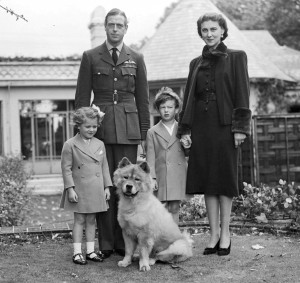 Something about Chows in the United States
Something about Chows in the United States
According to AKC records, the first Chow Chow exhibited at Westminster was Takya, entered by Miss A.C. Derby in 1890. In 1901, Dr. and Mrs. Henry Jarrett acquired their first Chow, Yen How, from China via a San Francisco exotic animal dealer. They then imported six or seven more Chows from China to establish their Chestnut Hills kennel in Philadelphia, the first Chow Chow kennel on the East Coast. In 1903, Yen How became the first Chow registered with the AKC.
In 1905, Mrs. Charles E. Proctor founded her Blue Dragon Kennel; she imported Chinese Chum, who became the first American show champion. He is still considered the father of the breed in America.
Other pioneers in America included Mrs. E.K. Lincoln, who established the Greenacre Kennel in Connecticut. Mr. and Mrs. David Wagstaff of the Ledgeland Kennel became known nationwide as the owners of English import Ch. Ledgeland’s Wupei Nagyur Tut, born in 1952 and entered at Crufts in 1954. It is impossible to mention here all American and Canadian breeders and exhibitors who devoted their lives to the Chow. If you are interested in the more recent American history of the breed, T.F.H. Publications published The Book of the Chow Chow in 1977. It’s a splendid, richly illustrated work by Dr. Samuel Draper and Joan Mcdonald Brearley and one of my favorite dog books (ISBN 0 87666 653 5).
We have tried to find the names of all photographers. Unfortunately, we do not always succeed. Please send a message to the author if you think you are the owner of a copyright.
A retired bookseller and publisher, Ria Hörter is a dog writer from The Netherlands. She is the contributing editor of the leading Dutch national dog magazine Onze Hond (Our Dogs) and works for the Welsh Springer Spaniel Club of the Netherlands of which she was one of the founders. She served the club for 44 years, as secretary and chairman and is a Honorary Life Member of this breed club. She was nominated twice, and a finalist in the 2009 Annual Writing Competition of the Dog Writers Association of America, for her articles in Dogs in Canada. On April 12, 2014, she was awarded the Dutch Cynology Gold Emblem of Honour. The award was presented by the Dutch Kennel Club. For more information visit: riahorter.com
Well-known Chow Chow owners
• Sigmund Freud (1856-1939), psychoanalyst
• Eleanor Roosevelt (1884-1962), U.S. First Lady
• Princess Marie Bonaparte (1882-1962), psychoanalyst
• Joan Crawford (1905-77), American actress
• Georgia O’Keeffe (1887-1986), American painter
• George, Duke of Kent (1902-42), younger brother of Kings Edward VIII and George VI
• Martha Stewart (1941- ) American television personality, businesswoman and writer
Chow Chow
• Country of origin: China
• Patronage: Great Britain
• Used as: war dog, gun dog, guard dog, freight dog; later, monastery dog and farm dog. Now companion dog and suitable in various dog sports.
• Life expectancy: 8 to 12 years
• First breed standard in Great Britain and the U.S.: 1906, based on the Chinese import Ch. Chow VIII: chowtales.com/1906-chow-standard
• FCI standard: fci.be/Nomenclature/Standards/205g05-en.pdf
• AKC standard: akc.org/dog-breeds/chow-chow/
• FCI Group: Group 5 – Spitz and primitive type. Section 5: Asian Spitz and related breeds.
• AKC Group: Non-Sporting
• Breed club U.S.A.: chowclub.org/ccci/
Click here to read the complete article
358 – September 2019
Short URL: https://caninechronicle.com/?p=172496
Comments are closed
